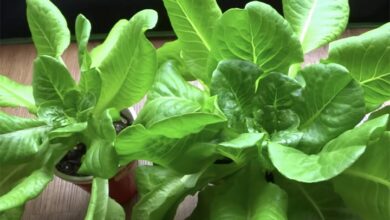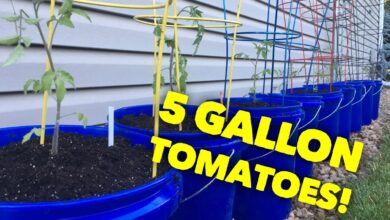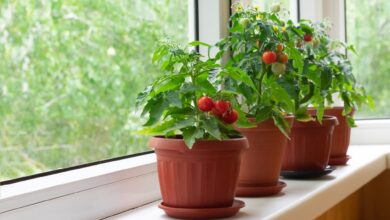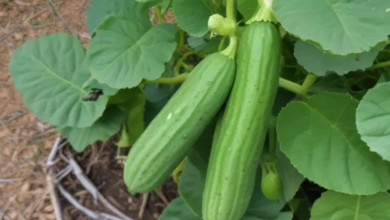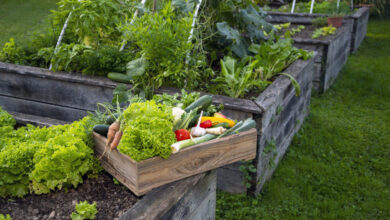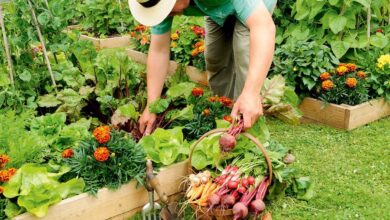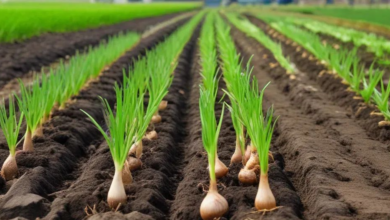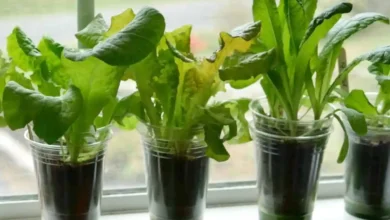Why Your Tomatoes Keep Splitting (And How to Stop It)
Learn why tomatoes split and crack, plus proven prevention methods. Discover watering tips, resistant varieties, and expert solutions for perfect tomatoes.
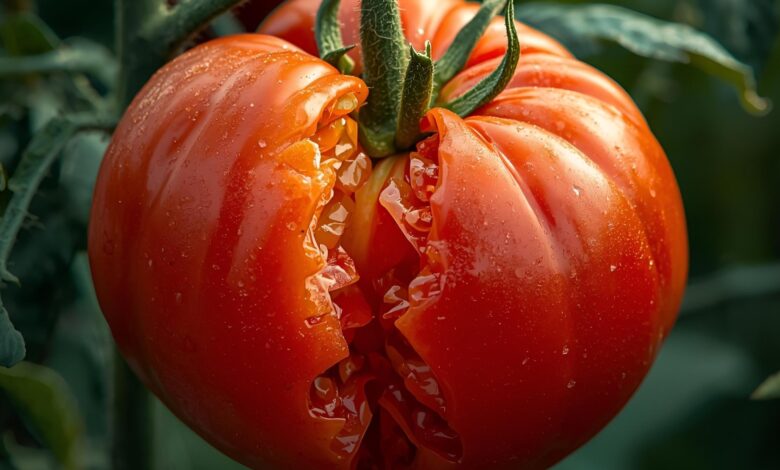
A Few gardening frustrations compared to discovering your beautiful, ripe Tomatoes Keep Splitting just as they reach peak perfection. You’ve nurtured these plants through months of careful cultivation, only to find unsightly cracks radiating across the skin of fruits you’ve been eagerly anticipating. Tomato cracking isn’t just an aesthetic problem—these splits can invite disease, attract pests, and significantly reduce your harvest quality. Understanding why this phenomenon occurs represents the first step toward growing flawless tomatoes that reach your table intact.
Tomato splitting affects gardeners across all experience levels, from beginners tending their first backyard plot to seasoned growers managing expansive gardens. The good news? This common problem is entirely preventable once you understand the underlying causes. Whether you’re growing heirloom beefsteaks, cherry tomatoes, or hybrid varieties, the principles for preventing tomato cracks remain consistent across cultivars, though some varieties demonstrate greater resistance than others.
The primary culprit behind Tomatoes Keep Splitting involves irregular moisture fluctuations that cause the fruit’s interior to expand faster than the skin can accommodate. When tomato plants experience drought conditions followed by sudden heavy watering or rainfall, the fruit absorbs water rapidly, creating internal pressure that literally bursts through the skin. This explanation, while straightforward, only scratches the surface of the complex interplay between environmental conditions, plant physiology, and cultural practices that contribute to tomato cracking.
Beyond moisture management, factors including fertilization practices, temperature fluctuations, varietal selection, harvesting timing, and even pruning techniques all influence whether your tomatoes develop those frustrating concentric rings or vertical splits. Some gardeners struggle with this issue year after year, never identifying the root cause, while others inadvertently create perfect conditions through practices that maintain consistent growing environments.
This comprehensive guide explores every dimension of tomato splitting and cracking, providing actionable solutions backed by horticultural science and practical gardening experience. You’ll discover how to adjust your watering schedule, select crack-resistant varieties, properly fertilize your plants, and implement proven cultural practices that dramatically reduce splitting incidence. Whether you’re dealing with radial cracks circling the stem, vertical splits running from top to bottom, or microscopic stress fractures that mar otherwise perfect fruit, the strategies outlined here will help you achieve the pristine harvest you’ve been working toward all season.
Tomatoes Keep Splitting: What’s Really Happening
The Science Behind Tomato Cracks
Tomato splitting occurs when the fruit’s internal flesh expands more rapidly than its skin can stretch to accommodate growth. Tomato skins, particularly on ripe or nearly ripe fruit, lose elasticity as they mature and develop their characteristic color. When these less-flexible skins encounter sudden internal pressure from rapid water absorption, they quite literally burst at their weakest points. This mechanical failure creates the cracks gardeners find so disheartening.
The physiology of tomato fruit makes them particularly susceptible to this splitting phenomenon. Unlike many fruits with thick, leathery skins, tomatoes feature relatively thin epidermis layers designed more for photosynthesis and gas exchange than structural integrity. As fruits ripen and accumulate sugars, starches, and other compounds, their cells increase in size. Under normal, gradual growth conditions, the skin expands proportionally. However, when water influx occurs too rapidly—often after drought stress followed by heavy irrigation or rainfall—the internal cells swell dramatically and quickly, outpacing the skin’s ability to expand.
Two distinct types of tomato cracking commonly occur, each with slightly different causes and appearances. Radial cracking creates concentric circles radiating outward from the stem attachment point, while longitudinal cracking produces vertical splits running from the stem end toward the blossom end. Both types stem from similar moisture-related causes, though radial cracks typically indicate more severe water fluctuation, while longitudinal splits may develop even with moderate moisture changes, especially in susceptible varieties.
Why Some Tomatoes Split More Than Others
Not all tomatoes are created equal when it comes to splitting susceptibility. Cherry tomatoes and large beefsteak varieties demonstrate particular vulnerability to cracking, though for different reasons. Cherry tomatoes, with their small size and thin skins, lack the structural resilience to withstand rapid moisture changes. Their high sugar content also creates greater osmotic pressure, pulling water into the fruit more aggressively when available. Beefsteak tomatoes, conversely, struggle because their large size means more internal mass that can swell and create pressure against the skin.
Heirloom tomato varieties, beloved for their exceptional flavor and unique characteristics, often exhibit greater splitting tendencies compared to modern hybrid cultivars. Plant breeders have specifically selected hybrid varieties for crack resistance, developing tomatoes with thicker, more elastic skins and more consistent cell wall structures. While heirlooms weren’t bred with this commercial durability in mind, their genetic diversity also means some heirloom varieties naturally resist cracking better than others.
The ripening stage significantly influences splitting risk. Tomatoes become increasingly vulnerable as they transition from mature green to fully ripe. During this period, the skin’s collagen structure breaks down, reducing elasticity just as the fruit accumulates maximum internal moisture and sugars. This timing explains why many gardeners only notice cracks on nearly-ripe or ripe fruits, while green tomatoes on the same plant remain unblemished despite experiencing identical growing conditions.
The Primary Cause: Water Fluctuations

How Inconsistent Watering Triggers Splits
Irregular watering represents the single most significant factor causing tomato splitting. When tomato plants endure drought conditions, they naturally reduce water content in their fruits, causing slight shrinkage and skin tightening. The plant prioritizes survival over fruit production, directing limited water resources toward maintaining foliage and root systems. During this stress period, the tomato skin becomes somewhat hardened and less pliable.
When abundant water suddenly becomes available—whether through heavy rainfall, enthusiastic irrigation after noticing drought stress, or automatic sprinkler systems delivering large volumes infrequently—the plant rapidly transports moisture into the fruit. The dehydrated internal flesh acts like a sponge, absorbing water eagerly to replenish what was lost. This rapid rehydration causes cells to swell dramatically within hours. The previously tightened, less-elastic skin simply cannot expand quickly enough to accommodate this internal growth, resulting in mechanical failure manifested as cracks and splits.
The severity of splitting correlates directly with the magnitude of water fluctuation. A plant experiencing mild drought followed by moderate watering might develop microscopic surface checking—tiny stress lines that don’t fully penetrate the skin. However, severe drought followed by torrential rain or heavy irrigation commonly produces dramatic radial or longitudinal cracks that completely split the fruit open, exposing interior flesh to air, disease pathogens, and pest invasion.
Rainfall and Its Impact on Tomatoes
Heavy rainfall after drought periods creates particularly challenging conditions for preventing tomato cracking. Unlike controlled irrigation, gardeners cannot regulate natural precipitation intensity or timing. A sudden thunderstorm delivering two inches of rain in an afternoon provides more water than tomato roots can absorb and utilize gradually. The excess moisture saturates the soil, and the plant—programmed to maximize resource uptake when available—floods the fruits with water.
Interestingly, consistent light rainfall or frequent moderate precipitation rarely causes splitting issues. When tomato plants receive regular moisture, their fruits maintain consistent internal hydration. The skins remain more supple and elastic, capable of accommodating normal daily growth without stress. This principle explains why gardeners in regions with reliable, consistent rainfall often experience fewer cracking problems than those in climates with long dry spells interrupted by occasional deluges.
Soil type influences how rainfall affects splitting tendency. Heavy clay soils retain water longer, maintaining moisture after rain events, but also become waterlogged more easily. Sandy soils drain quickly, requiring more frequent watering but reducing the risk of prolonged saturation. Understanding your soil’s water-holding characteristics helps predict splitting risk following precipitation and informs supplemental irrigation decisions during both dry and wet periods.
Critical Prevention Strategy: Consistent Moisture Management
Establishing a Proper Watering Schedule
Creating a consistent watering schedule represents your most powerful tool for preventing tomato splits. Rather than watering sporadically when plants appear stressed or when convenient, establish a routine that maintains even soil moisture throughout the growing season. Most tomato plants require approximately 1 to 2 inches of water weekly, delivered through either rainfall or irrigation. Dividing this total into multiple smaller applications proves far more effective than providing all moisture in one or two heavy soaking sessions.
- Deep watering, performed less frequently, often receives recommendations in gardening literature, and this approach works well for establishing strong root systems. However, during the fruiting and ripening period, more frequent, lighter watering helps maintain the consistent moisture levels that prevent splitting tomatoes. Consider transitioning to a schedule providing water every two to three days during peak fruiting, adjusting based on temperature, humidity, and rainfall. This frequency keeps soil moisture relatively stable rather than cycling between extremes.
- Morning watering offers multiple advantages for tomato health and crack prevention. Irrigating early allows foliage to dry before evening, reducing disease pressure from fungi and bacteria that thrive in moist nighttime conditions. Morning application also ensures moisture penetrates the soil before daytime heat increases evaporation rates, maximizing water efficiency. Additionally, providing water before temperatures peak helps plants maintain steady transpiration rates throughout the day, contributing to more consistent internal fruit moisture levels.
Mulching to Maintain Even Soil Moisture
Mulching stands as perhaps the single most effective cultural practice for preventing tomato cracking. A 3-4 inch layer of organic mulch—such as straw, shredded leaves, grass clippings, or wood chips—spread around tomato plants creates a protective barrier that moderates soil moisture fluctuations. Mulch reduces evaporation from the soil surface, keeping moisture available to roots longer between watering or rain events. This buffering effect significantly reduces the dramatic moisture swings that trigger splitting.
Beyond moisture regulation, mulch provides additional benefits that support overall tomato health and indirectly reduce cracking susceptibility. Organic mulches break down gradually, adding nutrients and improving soil structure over time. Mulch suppresses weed growth, eliminating competition for water and nutrients. It moderates soil temperature, keeping roots cooler during hot weather and maintaining more consistent growing conditions. It also prevents soil-borne diseases from splashing onto lower leaves during rain or irrigation, protecting plant health.
Red plastic mulch deserves special mention for tomato cultivation. Research has demonstrated that red plastic not only provides the moisture and temperature regulation benefits of organic mulches but also reflects specific light wavelengths that enhance tomato growth and production. This specialized mulch has shown particular effectiveness in reducing splitting and cracking while simultaneously increasing yields. While more expensive than organic alternatives, red plastic mulch represents a worthwhile investment for serious tomato growers battling chronic cracking issues.
Using Drip Irrigation Systems
Drip irrigation systems provide unparalleled precision for maintaining the consistent moisture levels essential to preventing tomato splitting. Unlike overhead sprinklers that wet foliage (promoting disease) and water unevenly, drip systems deliver moisture directly to the root zone at controlled rates. This targeted application allows you to provide exact water volumes on predictable schedules, virtually eliminating the moisture fluctuations that cause cracks.
Modern drip irrigation timers enable complete automation, removing human inconsistency from the watering equation. You can program systems to deliver specific amounts at optimal times, adjusting for seasonal needs without remembering to manually water. During the critical ripening period when splitting risk peaks, drip systems can provide small amounts multiple times daily, maintaining the rock-steady moisture levels that allow skins to expand gradually alongside internal fruit growth.
The efficiency of drip irrigation extends beyond crack prevention to water conservation and overall plant health. These systems typically use 30-50% less water than overhead irrigation by eliminating evaporation and runoff losses. The consistent, appropriate moisture levels they maintain also optimize nutrient uptake, support more uniform fruit development, and reduce stress that could compromise plant immune function. While initial investment and installation require more effort than simply hand-watering with a hose, the long-term benefits for both crop quality and resource conservation make drip systems worthwhile for dedicated gardeners.
Choosing Crack-Resistant Tomato Varieties
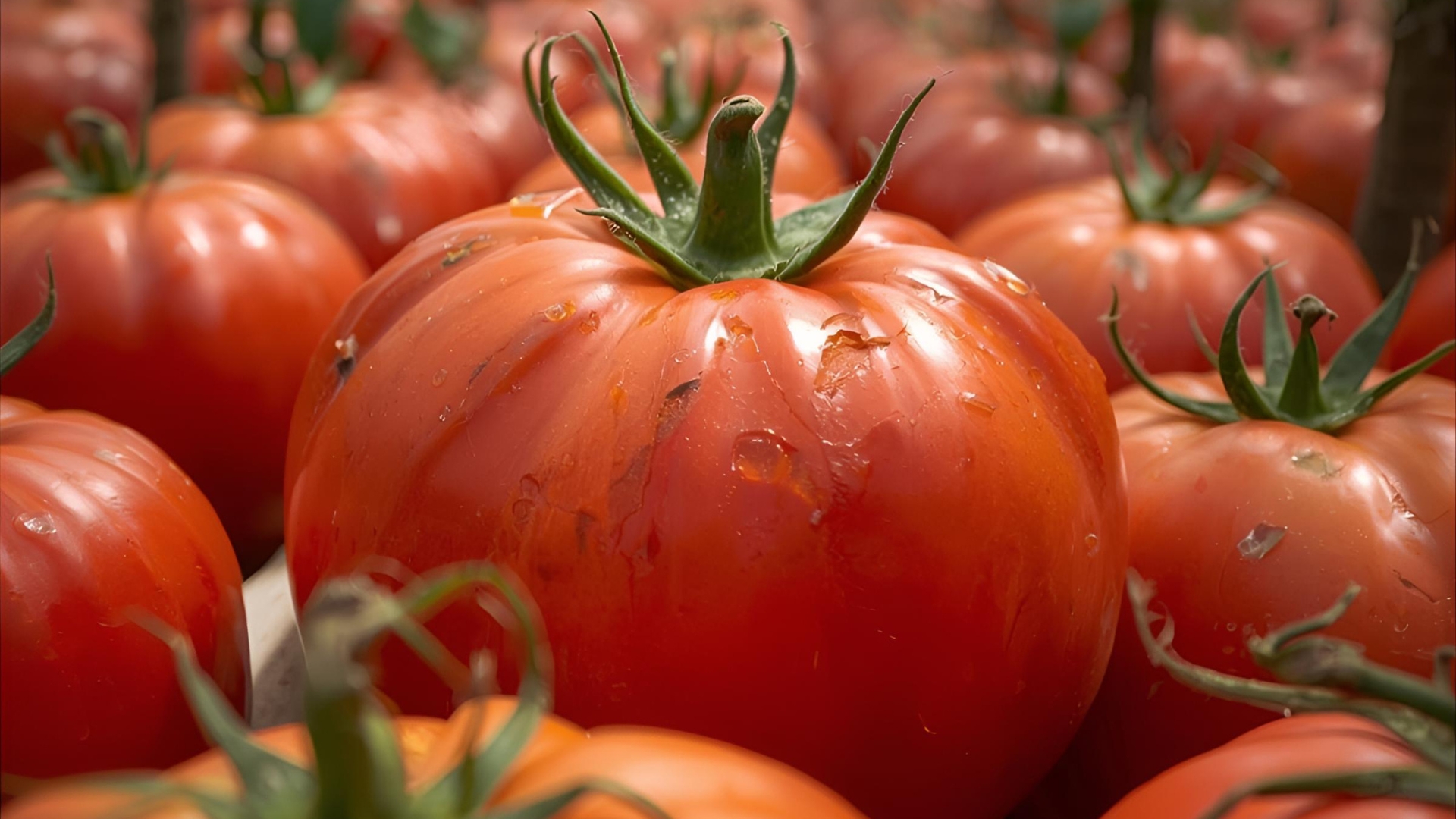
Varietal Differences
- Tomato varieties differ dramatically in their susceptibility to splitting and cracking. These differences stem from genetic variations affecting skin thickness, skin elasticity, growth rate, fruit size, and internal cellular structure. Plant breeders have specifically developed many modern hybrid varieties with crack resistance as a primary selection criterion, recognizing that this trait holds significant commercial value for both home gardeners and commercial growers who need fruits that maintain appearance and quality under variable conditions.
- Crack-resistant varieties typically feature several advantageous characteristics. Their skins contain more elastic collagen fibers that stretch more readily as internal flesh expands. Cell walls within the fruit demonstrate greater structural integrity, expanding more uniformly under moisture influx rather than creating pressure points. Many resistant varieties also ripen more gradually, giving skins more time to adjust to internal changes. Additionally, some resistant cultivars feature thicker skins that, while still split-capable under extreme conditions, better withstand the mechanical pressures that fracture thin-skinned varieties.
- Cracking under sufficiently severe conditions helps set realistic expectations. Even the most resistant cultivars can split if subjected to extreme drought followed by flooding. However, these varieties forgive minor moisture inconsistencies that would cause significant splitting in susceptible types. This resilience provides valuable insurance for gardeners who cannot achieve perfectly consistent moisture management due to unpredictable weather, travel schedules, or other practical limitations.
Best Crack-Resistant Tomato Varieties
- Determinate varieties (those that grow to a predetermined size and ripen most fruit simultaneously), ‘Celebrity’ stands out as exceptionally crack-resistant while delivering excellent flavor and productivity. This widely available hybrid produces medium-large slicing tomatoes with remarkably durable skins. ‘Mountain Fresh Plus’ offers similar resistance with disease tolerance, making it ideal for challenging growing conditions. ‘Plum Regal’ provides crack resistance in a paste tomato format, perfect for gardeners wanting reliable processing tomatoes.
- Indeterminate varieties (those that grow and produce continuously until frost) offer numerous crack-resistant options. ‘Big Beef’ combines large, flavorful beefsteak fruits with exceptional durability, rarely splitting even under less-than-ideal conditions. ‘Jet Star’ produces sweet, low-acid fruits on vigorous vines with excellent crack tolerance. ‘Mountain Delight’ and ‘Mountain Pride’ both offer good resistance while thriving in various climates. For unique colors, ‘Big Rainbow’ provides crack-resistant heirloom character in a stunning yellow-red bicolor.
- Cherry and grape tomato enthusiasts can select from several resistant options. ‘Sungold’, beloved for its exceptional sweetness, demonstrates remarkable durability despite its small size. ‘Sweet Million’ offers similar crack resistance with prolific production. ‘Juliet’ grape tomatoes feature especially thick skins that resist splitting while maintaining excellent flavor. ‘Yellow Pear’ provides crack resistance in a unique teardrop shape. These smaller varieties prove that size doesn’t necessarily determine splitting susceptibility—genetic characteristics matter far more than fruit dimensions.
Proper Fertilization Practices
Avoiding Excessive Nitrogen
Nitrogen fertilizer management significantly impacts tomato keep splitting susceptibility, though this connection often surprises gardeners focused primarily on watering practices. Excessive nitrogen promotes rapid, lush vegetative growth—abundant foliage and thick stems—but can compromise fruit quality. High nitrogen levels during fruiting encourage continued rapid cell division and expansion within developing tomatoes, creating the rapid internal growth that strains skins and increases cracking risk.
When tomato plants receive too much nitrogen, they also tend to develop thinner, more tender skins with less structural integrity. The plant directs resources toward vegetative growth rather than fruit skin development, producing tomatoes with weaker structural characteristics. These nitrogen-induced changes create perfect conditions for splitting: thin skins combined with rapid internal expansion. The problem compounds when high nitrogen coincides with irregular watering, essentially guaranteeing crack issues.
Proper nitrogen management for crack prevention involves reducing or eliminating nitrogen supplementation once plants begin setting fruit. While nitrogen remains essential during early growth for establishing strong plants, tomatoes need relatively little during the fruiting and ripening phases. Switching to fertilizers with higher phosphorus and potassium relative to nitrogen—often labeled as “bloom” or “fruiting” formulas—supports fruit development without encouraging the excessive growth that promotes Tomatoes Keep Splitting.
The Importance of Calcium
- Calcium plays a crucial role in developing strong, flexible tomato skins resistant to cracking. This essential nutrient strengthens cell walls throughout the plant, including in the epidermis layers that comprise fruit skin. Adequate calcium helps the skin maintain structural integrity while retaining the elasticity necessary to expand with growing fruits. Many gardeners familiar with calcium’s role in preventing blossom end rot overlook its equally important function in reducing splitting susceptibility.
- Calcium deficiency in tomato plants creates multiple problems beyond the well-known blossom end rot. Insufficient calcium results in weaker cell walls throughout fruits, making them more prone to mechanical failure when subjected to internal pressure. The deficiency also affects how evenly water is distributed within the fruit—calcium-deficient tomatoes tend to develop localized areas of rapid water uptake that create pressure points where cracks initiate. Even if overall moisture remains consistent, these localized pressure zones can trigger splitting.
- Calcium effectively requires understanding how this nutrient moves through plants. Unlike nitrogen, which translocates freely, calcium moves primarily with water through the transpiration stream. This limited mobility means you cannot quickly correct calcium deficiency by adding supplements when problems appear—maintaining adequate calcium throughout the season proves essential. Bone meal, crushed eggshells, gypsum, or soluble calcium supplements all provide this nutrient, though application timing and form affect availability. Incorporating calcium sources into soil before planting and side-dressing during early growth establishes the foundation for crack-resistant fruit development.
Balanced Nutrition for Healthy Plants
Beyond specific nitrogen and calcium considerations, maintaining overall balanced nutrition supports tomato plants’ natural resistance to cracking. Plants experiencing deficiencies in phosphorus, potassium, magnesium, or micronutrients develop various stress responses that can compromise skin quality, reduce elasticity, or alter water uptake patterns. These nutritional imbalances make plants more vulnerable to environmental stresses, including the moisture fluctuations that trigger splitting.
- Soil testing provides the most reliable foundation for balanced fertilization. Rather than guessing at nutritional needs or applying generic fertilizers, testing reveals specific deficiencies and excesses in your soil. This information allows targeted amendments that create optimal growing conditions without oversupplying nutrients that could contribute to cracking issues. Most university extension services offer affordable soil testing with detailed recommendations for vegetable gardens, including tomatoes.
- Organic fertilizers offer advantages for maintaining balanced nutrition without rapid-release spikes characteristic of synthetic options. Compost, well-rotted manure, fish emulsion, and other organic amendments release nutrients gradually as soil organisms break them down. This slow-release pattern provides steady nutrition that supports consistent growth without the surges that might promote splitting. Additionally, organic materials improve soil structure and water-holding capacity, indirectly contributing to the moisture stability that prevents tomato cracks.
Environmental Factors and Temperature Management
How Temperature Fluctuations Affect Splitting
- Temperature fluctuations influence Tomatoes that Keep Splitting through multiple mechanisms beyond their effects on water uptake. Extreme temperature swings alter the physical properties of tomato skins, affecting elasticity and structural integrity. During very hot weather, skin can become harder and more brittle as a protective response to minimize water loss. When temperatures then drop significantly—common in spring and fall, or between day and night even in summer—these hardened skins struggle to remain flexible, making them more prone to cracking when internal pressure develops.
- Temperatures accelerate tomato ripening, which naturally reduces skin elasticity. Fruits ripening rapidly during heat waves transition through the vulnerable near-ripe stage quickly, providing a narrow window when sudden moisture changes can trigger splitting. Conversely, cooler temperatures slow ripening, extending the period of vulnerability but also maintaining more elastic skins longer. Understanding this temperature-ripening-elasticity relationship helps predict when splitting risk peaks and when preventive measures become most critical.
- Catfacing, a related but distinct fruit deformity, commonly results from cool nighttime temperatures during flowering and early fruit development. While not true splitting, this malformation creates irregular scarring and puckering that resembles severe cracking. Temperatures below 55°F during these critical stages disrupt normal fruit development, creating the irregular growth patterns characteristic of catfacing. While less controllable than moisture management, awareness of temperature impacts helps diagnose specific tomato problems and adjust expectations based on seasonal weather patterns.
Providing Shade and Protection
- Shade cloth or strategic planting provides valuable protection during extreme heat that can contribute to splitting susceptibility. While tomatoes generally require full sun (6-8 hours daily), providing light afternoon shade during the hottest months helps moderate the temperature extremes that harden skins and stress plants. Thirty to forty percent shade cloth blocks enough intense rays to reduce heat stress without limiting photosynthesis necessary for fruit development and ripening.
- Planting tomatoes alongside taller crops that provide natural shade represents an organic alternative to shade cloth. Corn, sunflowers, or trellised pole beans positioned on the west side of tomato plants can filter harsh afternoon sun without casting full shade. This companion planting approach creates microclimates with moderated temperatures while maximizing garden space. The slight reduction in direct sun exposure during peak heat helps maintain more flexible tomato skins less prone to cracking.
- Greenhouse and high tunnel growers face different temperature management challenges but enjoy greater control. These structures can create extremely high temperatures that promote both rapid ripening and increased splitting risk. Adequate ventilation, shade cloth installation during summer months, and careful irrigation management become essential for preventing cracks in protected growing environments. The controlled conditions these structures provide, however, allow more precise moisture and temperature management than open-field growing, potentially reducing splitting incidence when properly managed.
Harvesting Strategies to Minimize Splitting
Picking at the Right Stage
- Harvest timing significantly influences whether tomatoes reach your kitchen intact or split before you can enjoy them. Many severe cracks develop during the final ripening stages on the vine when fruits are most vulnerable. Harvesting tomatoes at the “breaker” stage—when color just begins transitioning from green to red, pink, or yellow, depending on variety—allows controlled ripening indoors where moisture and temperature remain stable. This early harvesting prevents the moisture fluctuation exposure that causes late-stage splitting.
- Breaker-stage tomatoes ripen beautifully indoors, developing full color and flavor nearly identical to vine-ripened fruits. The key involves harvesting when the color change has initiated, indicating the fruit has reached physiological maturity. Tomatoes picked when fully green lack the internal development necessary for proper ripening and will never achieve optimal flavor. However, once the breaker stage arrives, the fruit can complete the ripening process independent of the vine, protecting it from environmental stresses that trigger tomato cracking.
For those preferring vine-ripened flavor, compromising by harvesting when fruits show about 50-75% color change provides partial protection while maintaining excellent taste. These mostly-ripe tomatoes need only a day or two indoors to complete ripening, minimizing exposure to potentially splitting-inducing conditions. This middle-ground approach works particularly well during periods of predicted heavy rainfall when leaving fully ripe fruits on plants almost guarantees discovering them cracked and split the following morning.
Regular Harvest Monitoring
Daily harvesting during peak ripening periods provides the most reliable split prevention. When tomatoes reach vulnerable stages, checking plants morning and evening allows you to identify and remove fruits showing early color change before severe weather events arrive. This vigilance proves especially important when forecasts predict heavy rainfall after drought periods—exactly the conditions most likely to cause widespread cracking.
Establishing a regular harvest routine also helps you recognize patterns specific to your garden. You’ll notice which varieties tend to split under your particular conditions, which parts of the garden experience more cracking (perhaps due to irrigation coverage differences or soil variations), and what weather patterns correlate with increased splitting incidents. This observational knowledge accumulates over seasons, making you increasingly skilled at predicting and preventing problems.
Post-harvest handling affects split tomato usability. Fruits showing minor surface cracks remain perfectly edible when used immediately—simply cut away affected areas. More severe splits that expose interior flesh should be used promptly to prevent bacterial growth, making them ideal for immediate cooking applications like sauce, soup, or salsa. While cosmetically damaged tomatoes don’t store well, their flavor remains excellent when processed quickly, salvaging harvests that would otherwise go to waste.
Additional Prevention Techniques
Pruning and Plant Management
- Pruning practices indirectly influence Tomatoes Keep Splitting by affecting overall plant vigor, moisture distribution, and ripening patterns. Removing lower leaves and suckers concentrates plant energy into fruit production while improving air circulation around developing tomatoes. Better airflow helps moisture evaporate more evenly from foliage and soil surfaces, contributing to the consistent moisture environment that prevents cracking. However, excessive pruning that removes too much foliage can expose fruits to sudden direct sunlight, potentially promoting the skin hardening that increases split vulnerability.
- Determinate varieties require minimal pruning beyond removing diseased or damaged foliage. These bush-type plants naturally maintain manageable sizes and don’t produce the abundant suckers characteristic of indeterminate types. Over-pruning determinate can actually increase splitting risk by exposing fruits to environmental extremes and concentrating resources into fewer fruits, potentially accelerating growth rates. Light selective pruning to remove the lowest branches prevents soil splash and disease while maintaining protective canopy coverage.
- Indeterminate tomatoes benefit from more active pruning management. Removing suckers below the first flower cluster and continuing to remove some suckers as plants grow helps maintain manageable plant sizes while directing resources appropriately. This management style supports consistent fruit development without the feast-or-famine resource allocation that might contribute to irregular growth patterns and splitting. However, leaving adequate foliage to shade ripening fruits remains important—bare stems with exposed fruits often experience more cracking than well-foliated plants.
Staking and Support Systems
Proper staking and support influence Tomatoes Keep Splitting by affecting how plants handle weight distribution and respond to environmental stresses. Well-supported plants experience less stem and branch stress, allowing more efficient water and nutrient transport throughout the plant. This optimized resource distribution helps maintain the consistent internal fruit growth that prevents the pressure buildup causing cracks. Additionally, supported plants keep fruits off the ground where moisture levels fluctuate more dramatically from soil contact.
Tomato cages, stakes, or trellis systems should be installed at or shortly after planting, before root systems become established. Late installation risks damaging roots and disrupting water uptake, potentially creating the inconsistent moisture supply that promotes splitting. Sturdy support systems that can handle full-season growth without sagging or collapsing maintain proper plant positioning throughout the critical fruiting and ripening periods when crack prevention becomes most important.
Different support methods suit various growing styles. Single-stake systems work well for regularly pruned indeterminate varieties, providing strong central support. Cages accommodate determinate varieties and unpruned indeterminates, offering distributed support without requiring tying. Trellis systems suit intensive production gardens, maximizing space while providing excellent support and air circulation. Regardless of the method chosen, proper support contributes to overall plant health and stress reduction, indirectly supporting the consistent growth patterns that minimize Tomatoes Keep Splitting.
Using Row Covers and Protective Barriers
- Row covers provide physical protection against sudden environmental changes that might trigger splitting. Lightweight floating row covers allow light, air, and moisture penetration while buffering temperature fluctuations and protecting against heavy rainfall impact. During periods when forecasts predict the drought-to-deluge conditions that cause widespread cracking, temporarily covering tomato plants can intercept the heaviest rain, allowing more gradual soil moisture increases that plants can manage without splitting fruits.
- Season extension fabrics serve dual purposes—protecting from frost during spring and fall while also moderating midsummer heat and rainfall impacts. These fabrics create microclimates with reduced temperature extremes and moderated moisture conditions, providing the stable environment tomatoes prefer. While not practical for season-long use in most climates due to heat buildup and pollination access issues, strategic deployment during high-risk periods offers valuable split prevention insurance.
- Overhead structures, including permanent shade houses, temporary canopies, or simple rain shields positioned above plants, provide rainfall protection without enclosing plants. These structures allow air circulation while preventing heavy raindrops from directly impacting soil and plants. This approach proves particularly valuable in regions experiencing intense thunderstorms—protecting soil from rainfall compaction and preventing the sudden saturation that triggers tomato cracking while maintaining excellent growing conditions otherwise.
Dealing With Split Tomatoes
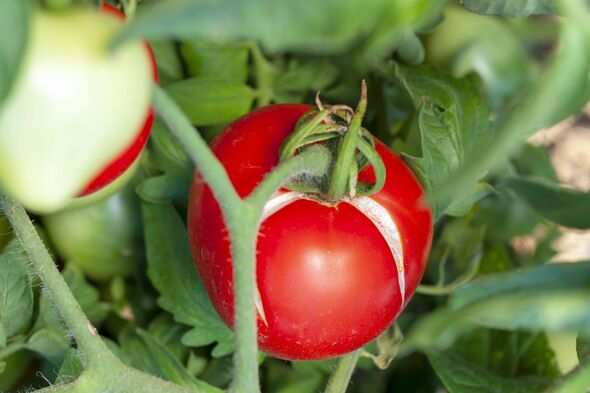
Are Split Tomatoes Safe to Eat
- Split tomatoes remain completely safe to eat when handled appropriately, despite their cosmetic imperfections. The cracking itself doesn’t introduce toxins or make the fruit unsafe—it simply creates openings where external contaminants might enter. Minor surface splits that have just occurred pose virtually no food safety risk, especially when tomatoes are harvested immediately upon discovering the damage. The primary concern involves secondary infections or pest invasions that might develop if split fruits remain on plants exposed to moisture, bacteria, fungi, and insects.
- Split tomato safety involves inspecting the crack anthe d surrounding tissue. Fresh splits showing clean, undamaged flesh indicate the damage occurred recently, and the fruit remains in good condition. These tomatoes can be washed, cut to remove the affected area, and used immediately with complete confidence. However, splits showing discoloration, mushiness, mold growth, or pest activity signal decomposition has begun. While cutting away extensive damaged areas might salvage portions, these fruits warrant closer inspection and conservative disposal of questionable sections.
- Food safety protocols for split tomatoes mirror those for any damaged produce. Wash thoroughly under running water before cutting to avoid transferring surface bacteria into the flesh when slicing. Use immediately rather than storing, as openings created by cracks allow moisture loss and provide entry points for spoilage organisms. When in doubt, cook split tomatoes rather than consuming raw—heat destroys most pathogens that might have colonized damaged areas, making cooked applications like sauce, soup, or roasted preparations ideal for slightly compromised fruits.
Best Uses for Cracked Tomatoes
- Cracked tomatoes excel in cooked preparations where appearance matters less than flavor. Sauce-making represents perhaps the ideal use for split fruits—cooking breaks down all texture differences while concentrating flavors, producing excellent results indistinguishable from sauce made with pristine tomatoes. Salsa similarly masks cosmetic imperfections while delivering full flavor. Soups, stews, and braised dishes all welcome split tomatoes, particularly when they’d otherwise go to waste.
- Canning split tomatoes requires extra caution but remains perfectly viable with appropriate practices. Remove all damaged portions, ensuring only clean, firm flesh enters jars. Follow proper canning protocol, including adequate acid levels and processing ti,mes to ensure safety. While cracked tomatoes can’t be canned whole—the compromised skins would disintegrate during processing—they work beautifully for canned crushed tomatoes, sauce, or juice where texture modification is expected.
- Fresh applications, carefully trimming away damaged areas,a allow using split tomatoes in salads, sandwiches, or fresh salsas when the remaining flesh shows no signs of deterioration. Many gardeners reserve perfect specimens for fresh eating while relegating split tomatoes to cooking, maximizing harvest utilization. This practical approach ensures no homegrown tomatoes go to waste while maintaining the highest quality for preparations where appearance matters most.
Also Read: How to Grow Tomatoes in 5 Gallon Buckets Complete Guide for Small Spaces
Conclusion
Tomatoes Keep Splitting frustrates countless gardeners annually, but this preventable problem yields to understanding and appropriate cultural practices. The primary cause—irregular moisture fluctuations creating internal pressure that exceeds skin elasticity—responds to consistent watering schedules, mulching, and potentially drip irrigation systems that maintain stable soil moisture throughout the growing season. Selecting crack-resistant varieties provides genetic advantages that forgive minor moisture inconsistencies while delivering excellent flavor and productivity.
Proper fertilization, avoiding excessive nitrogen while ensuring adequate calcium develops strong, flexible skins capable of expanding with internal growth. Managing environmentalfactorsors including temperature extremes, harvesting at optimal stages before severe splits develop, and implementing supportive cultural practices from staking to pruning, all contribute to pristine fruit production. Even when tomatoes crack, they remain safe and delicious for immediate use, particularly in cooked applications where appearance becomes irrelevant.
By combining these proven prevention strategies with a variety sofelection appropriate to your specific growing conditions, you can dramatically reduce or potentially eliminate the splitting that has diminished previous harvests, finally achieving the flawless, beautiful tomatoes that reflect all the care and attention you’ve invested in your garden throughout the season.


